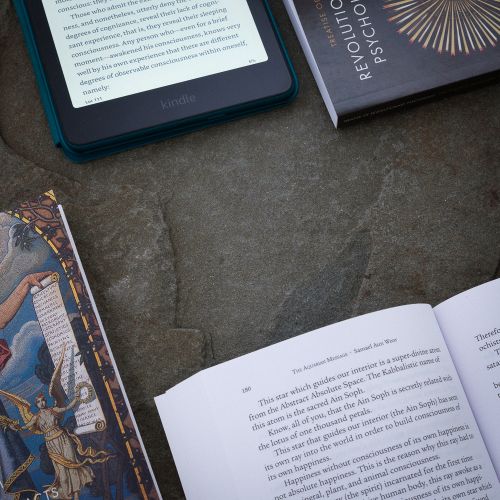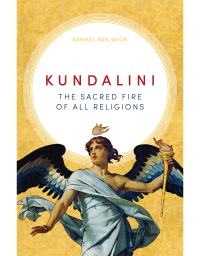1. Internal meditation is a scientific system to receive information.
2. The wise submerges into meditation to search for information.
3. Meditation is the daily bread of the wise.
4. Meditation has different steps.
a. Asana: posture of the body
b. Pratyahara: serene mind
c. Dharana: internal concentration
d. Dhyana: internal meditation
e. Samadhi: ecstasy
5. Firstly, we must place our body in a very comfortable position.
6. Before starting our concentration we have to place our mind in serenity; that is to say, we have to remove every type of thought from our mind.
7. After having accomplished the former steps, we then rise up to the steps of dharana, dhyana, and samadhi.
8. Whosoever follows the path of Jnana Yoga1 converts oneself into a sannyasin2 of thought.
9. First, we concentrate our mind on the physical body; then after meditating profoundly about the nature of this marvelous vehicle, we discard it from the mind by saying, “I am not the physical body.”
10. Then, we concentrate our thought on our ethereal body, and we discard it by saying, “I am not the ethereal body.”
11. Then after, we meditate on the astral and mental bodies.
12. The astral and mental bodies are the two columns of the temple that rest upon the cubic stone of Yesod. That cubic stone is the ethereal body. The disciple has to pass between those two columns of the temple.
13. Those two columns are Jachin and Boaz—one black and the other white.3
14. The word INRI is written with characters of fire upon those columns.
15. This word INRI is a password that allows us to pass between the two columns of the temple to function without material vehicles of any type within the World of the Mist of Fire.
16. The disciple will meditate profoundly on these two columns, which are the astral and mental bodies. The disciple will relax profoundly while mentally chanting the mantra INRI, prolonging the sound of each letter by imitating the sharp sound of the crickets of the forest, thus, until achieving that sound, until giving unto the letters that sharp sound, a sound synthesis like a prolonged “S,” as follows: Ssssssssssssssssssssssssssssssss……
17. It is necessary to identify oneself with that sibilant very sharp sound, similar to the most elevated note that a fine flute can give.
18. In the august Rome of the Caesars, the cricket was considered sacred and was sold in golden cages at very high prices.
19. If we can have that little creature close to our ears and meditate profoundly on its sound, then the sharp note that the cricket emits would awaken the same sound in our brain.
20. Then we could rise from our bed with our astral body and with complete consciousness travel towards the Gnostic Church.
21. That is the subtle voice mentioned by Apollonius of Tyana. That is the still small voice that Elijah heard in the entrance in of the cave.
22. Let us read some verses of the Bible:
“And he said, Go forth, and stand upon the mount before the LORD. And, behold, the LORD passed by, and a great and strong wind rent the mountains, and brake in pieces the rocks before the LORD; but the LORD was not in the wind: and after the wind an earthquake; but the LORD was not in the earthquake:
23. “And after the earthquake a fire; but the LORD was not in the fire: and after the fire a still small voice.
24. “And it was so, when Elijah heard it that he wrapped his face in his mantle, and went out, and stood in the entrance of the cave.
And, behold, there came a voice unto him, and said, What doest thou here, Elijah?” —1 Kings 19:11-13
25. The deeply relaxed disciple will meditate profoundly on the black column (the astral body) and will try to hear the still, small voice, while saying, “I am not the astral body.”
26. The disciple will then meditate profoundly on the white column (the mental body) and will try to hear the still small voice, the subtle voice, the essence of INRI, the sibilant “S,” the sharp sound of the crickets from the forests; thus, while becoming profoundly drowsy, one will discard the mental body by saying, “I am not the mental body.”
27. Now, the disciple will concentrate one’s entire mind on one’s willpower, and will discard the body of willpower by saying, “I am not willpower either.”
28. Now let the disciple concentrate one’s mind on one’s consciousness, on Buddhi (body of the consciousness) and discard oneself from that marvelous body by saying, “I am not the consciousness either.”
29. Now let the disciple concentrate oneself in the Innermost, become profoundly drowsy, take a totally childlike attitude, and say, “I am the Innermost. I am the Innermost. I am the Innermost.”
30. Let the disciple become even more drowsy and say, “The Innermost is just the child of the inner Christ.”
31. Let the disciple profoundly meditate on the inner Christ.
32. Now the disciple should be absorbed within the inner Christ. Let the disciple be absorbed in Him, in Him, in Him.
33. Let the disciple say to oneself, “I am He. I am He. I am He.”
34. The mantra Pander allows us to identify ourselves with our Inner Christ, so to act as Christ within the universe of Pleroma.
35. May the disciple become profoundly drowsy, because drowsiness is the bridge that allows us to pass from meditation into samadhi.4
36. There are many types of samadhi: astral samadhi, mental samadhi, causal samadhi, samadhi within the consciousness, samadhi within the Innermost, and samadhi within the inner Christ.
37. In the first samadhi, we only enter into the astral plane. In the second type of samadhi, we soar with the mental body throughout space.
38. In the third type of samadhi, we function within the world of willpower without material vehicles of any type. In the fourth type of samadhi, we soar with the Buddhic body throughout space.
39. In the fifth type of samadhi, we can move in the Innermost without vehicles of any type throughout the World of the Mist of Fire.
40. With the sixth type of samadhi, we can function in the inner Christ.
41. There is a seventh type of samadhi for the great masters of samadhi. In this samadhi, we can visit the nucleoli upon which the entire universe is based. Those nucleoli, speaking in an allegorical way, are openings through which we can observe the terrific majesty of the Absolute.
May the peace of the Father be with ye.







